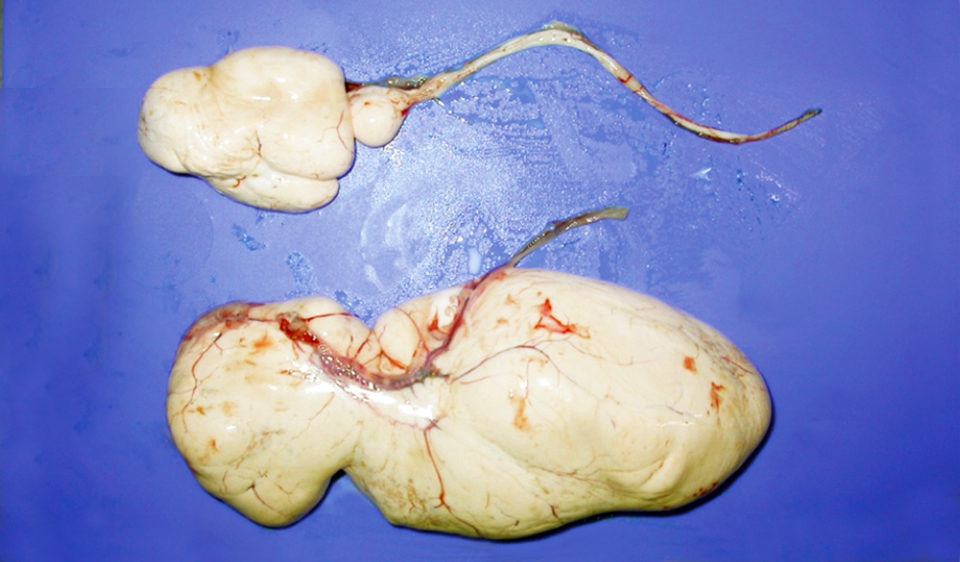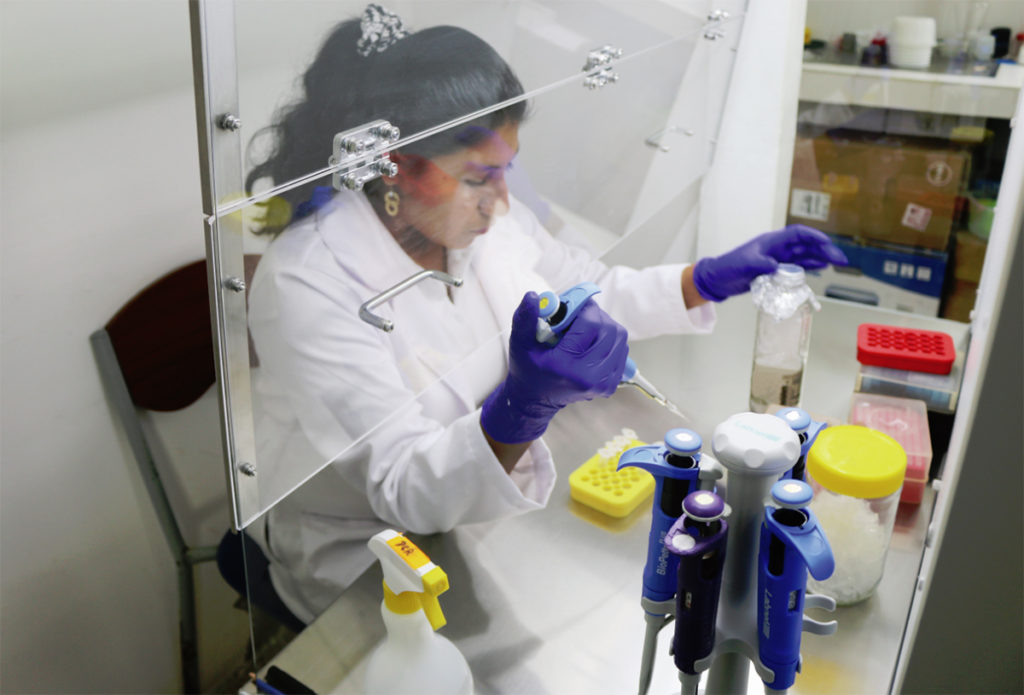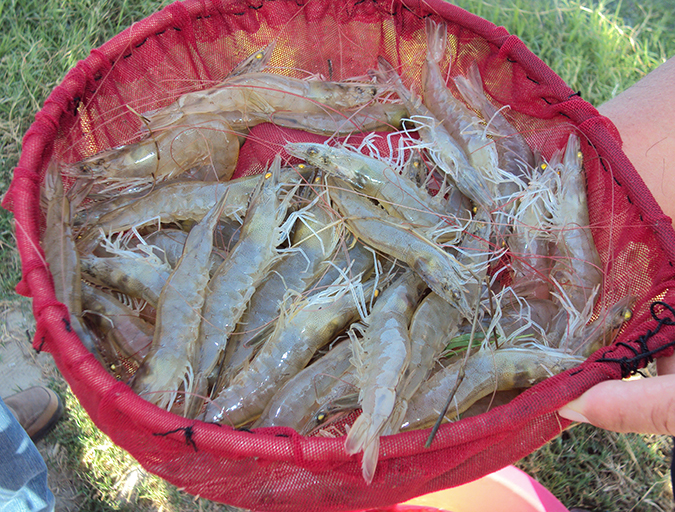Industry must allow sex reversal and identification of neomales to become routine

The Tasmanian Atlantic salmon industry was established in 1984, when the first of three batches of fertilized eggs were delivered to a hatchery at Wayatinah from the Gaden hatchery in New South Wales. The industry relies on maintaining and improving on the genetics of the original founding families from River Phillip in Nova Scotia, Canada.
Selective breeding over the past decade has ensured the industry’s continued growth through genetic improvement and the maintenance of high levels of genetic diversity. However, the original stocks have a propensity for early sexual maturation, which has been exacerbated by the environmental conditions encountered in the relatively low latitudes of Tasmania’s farming environment. The maturation of Atlantic salmon prior to harvest is costly to the industry, as fish become unmarketable due to reduced flesh quality and are also more susceptible to disease.
For the past two decades, Tasmanian aquaculture has waited for rapidly advancing genetic technologies to reveal the Atlantic salmon sex-determining gene. In 2010, the industry joined forces with researchers from Australia and Canada to gain knowledge of sex determination mechanisms in the Tasmanian Atlantic salmon population. Their foremost goal was to develop a genetic test to determine sex and remove identification uncertainties. However, increased knowledge of sex determination pathways may also provide the key to more efficient sex-reversal methods.
Maturation, sex determination pathways
Male Atlantic salmon are much more likely to mature early than females. As a consequence, the Tasmanian industry relies on all-female commercial production. This requires dietary administration of the hormone 17α-methyltestosterone to sex reverse XX females to become phenotypic (but still XX) males (neomales). All-female offspring are then produced by crossing these XX phenotypic males with XX females.
An added benefit of this approach is that in the rare event a fish escapes from marine pens, the chances of a population establishing in the wild are remote, due to the absence of males.
For decades, hatchery workers have had the unenviable task of distinguishing these neomales from normal genetic males. Misidentification of neomales results in 50 percent male and 50 percent female offspring, which is costly to the industry.
Sex determination pathways are known to be highly conserved with master sex determination switches identified in many vertebrate species, including Sry in mammals, Dmy in medaka and Dmrt1 in chickens. While male sex-linked genetic makers have been discovered in rainbow trout, Chinook salmon, coho salmon, pink salmon and chum salmon, there remains a paucity of knowledge regarding Atlantic salmon.
Many theories have arisen in relation to sex determination mechanisms in the salmonids. Chromosomes have the ability to cross over for the larger part. However, the small size of the sex-determining region prevents genetic recombination. Therefore, sex is genetically inherited in salmonids.
In addition, the common ancestor of salmonids went through an auto-tetraploidization event, which resulted in duplication of the genome. The impact of this event on sex determination is largely unknown. The difficulty in isolating the master sex-determining gene may be due to deletion of one copy or both from the duplicated genome. An alternative theory is that sex is in a region of the genome closely associated with transposable elements that enable the sex-determining region to “jump” around the genome.

Breeding program
The Tasmanian Atlantic salmon selective-breeding program provided a unique starting point with known family lineages recorded back to the founding families. Using this knowledge, researchers adopted a combination of genetic technology approaches to find the chromosomal sex-determining region. Around 1,670 salmon from 53 families with 643 individuals of known sex were assessed by single nucleotide polymorphism genome wide associated scans. Two chromosomes, Ssa06 and Ssa02, were identified by this method as potentially linked to sex.
Polymorphisms predicted to be associated with sex were located on a chromosome map to identify microsatellite markers in the same regions for testing on current family lines. Initial tests supported sex factors on two chromosomes. However, further testing of 49 families revealed 31 and 16 families mapping to Ssa02 and Ssa06, respectively, while two families were inconclusive.
By this time, sex had been identified on Ssa03 in European salmon, which was also found to be true of the two previously inconclusive families. To date, it appears that sex is linked to at least three chromosomes in Tasmanian Atlantic salmon. Further testing on the remaining 30 founding family lines to determine sex lineages is under way.
Genetic test
The recent discovery of sdY in rainbow trout has led to the hypothesis that there is a master sex determination gene in the salmonids. A multiplex genetic test was developed based on two regions of the sdY gene. As a male sex-linked gene is expected to be negative in females, a control housekeeping gene was also incorporated into the test. Trials were undertaken with over 1,000 individuals of known sex to assess test accuracy.
Testing proved to be highly effective with successful assignment of sex to greater than 97 percent of the individuals (2 percent male and 1 percent female negative results). The low error rate may be associated with miscalls during visual sex assessment. From an industry perspective, removal of the occasional extra male is preferable to retention. The low error rate with females was considered acceptable, given the improved accuracy in determining sex through genetic testing.
Validation trial
Together with industry, a validation trial was undertaken that included three year classes of broodstock and more than 8,600 individuals. The trial involved implanting passive integrated transponder tags into and taking biopsies from three year classes of mixed-sex broodstock that had been sex-reversed via hormone treatment. Samples were described as either SdY-positive or SdY-negative. Positive individuals were culled from the population, and their gonads were inspected for any sign of ovarian tissue or structures that suggested they were, in fact, genetic females. No such sign was seen in over 4,000 SdY-positive individuals that were dissected.
Because this genetic test is still under development, the industry continues to visually inspect each teste prior to the extraction of milt for commercial use. Only testes that possess residual ovarian tissue are currently used in commercial production, so the removal of close to 50 percent of the mixed-sex cohort prior to the spawning season resulted in a much higher success rate in the identification of test is that were suitable for commercial production.
Perspectives
It is hoped that in the future, the genetic test can be validated as close to 100 percent reliable for the removal of true males, and that both methods of sex reversal and identification of neomales become a much more routine part of the Tasmanian Atlantic salmon industry.
It should be noted that the Tasmanian Atlantic salmon industry strictly controls and limits the use of hormones to broodstock production, and no commercial salmon product has ever been exposed to hormones.
(Editor’s Note: This article was originally published in the March/April 2015 print edition of the Global Aquaculture Advocate.)
Authors
-
Natasha Botwright
CSIRO Queensland Bioscience Precinct
306 Carmody Road
St. Lucia, Queensland, Australia 4067[117,97,46,111,114,105,115,99,64,116,104,103,105,114,119,116,111,98,46,97,104,115,97,116,97,110]
-
Brad Evans, Ph.D.
Saltas Pty. Ltd.
Wayatinah, Tasmania, Australia -
Krzysztof Lubieniecki, Ph.D.
Department of Molecular Biology and Biochemistry
Simon Fraser University
Burnaby, British Columbia, Canada -
William Davidson, Ph.D.
Department of Molecular Biology and Biochemistry
Simon Fraser University
Burnaby, British Columbia, Canada -
Mathew Cook, Ph.D.
CSIRO, Ecoscience Precinct
Dutton Park, Queensland, Australia
Tagged With
Related Posts

Health & Welfare
Asepsis key to prevent contamination in shrimp hatcheries
Maintaining biosecurity and asepsis in larval shrimp production is a key component of the production chain in Ecuador, which requires the production of 5.5 billion larvae monthly from 300-plus hatcheries.

Health & Welfare
Genetics key to maximum growth rate for shrimp
Realizing higher growth rates in commercially cultured shrimp has many important benefits, including reducing various risks, cutting costs and increasing economic opportunities. Shrimp genetics primarily determines the amount of additional growth that can be achieved, as shrimp typically reflect their parents’ growth rates.

Health & Welfare
GOAL 2017 video: Neil Manchester, Hendrix Genetics
At the Global Aquaculture Alliance's annual GOAL conference, held last month in Dublin, Ireland, we introduced a series of Pecha Kucha presentations about the future of aquaculture. We'll feature all seven on the Advocate, starting with Neil Manchester's rapid-fire view at how genetics are improving breeding techniques for aquaculture.

Responsibility
Genetic improvement aids red tilapia growth in Egypt
A new breeding program for genetic improvement of red tilapia was established at the Fish Research Center (FRC), Suez Canal University, in Ismailia, Egypt. It aims to improve the growth rate of the fish and to provide significant benefits to tilapia farmers.


